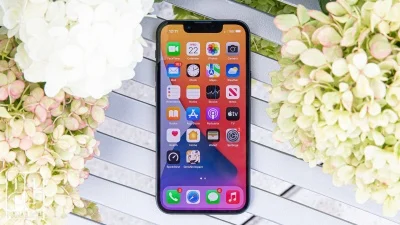Smartphones have been slowly increasing in size, and we’re now at a point where most smartphones are difficult to use with just one hand. Flagships are huge: Apple and Samsung reserve the best cameras, biggest batteries, and most spacious storage for their 3-inch-wide manual phones in the Max and Ultra models, respectively. But it’s still possible to find small, good phones that fit in your hand, give you all the features you want, and often don’t break the bank.
With that in mind, these are some of the best small phones we’ve tested.
Best Phone Deals of the Week*
- Samsung Galaxy S23 128GB Unlocked Phone (Black) — $699.99 (list price $799.99)
- OnePlus 10 Pro 5G 128GB Unlocked AMOLED Phone — $449.99 (list price $549.99)
- Apple iPhone 13 128GB Unlocked Phone (Renewal) — $668.00 (list price $699)
- TCL 20 Pro 5G 256GB Unlocked Smartphone (Moondust Gray) — $269.99 (list price $519.99)
- Motorola Moto G 5G 256GB Unlocked Phone (Moonlight Gray) — $199.99 (list price $399.99)
How big is too big?
Smartphones have increased in size, but our hands have not. Back when LG launched the G2 smartphone, the company said most people could comfortably hold a phone as wide as 2.8 inches. That’s probably why, since the Galaxy S2, the base size of Samsung’s flagship S phone models has hovered between 7.2 and 8.3 inches. Since the iPhone 2, Apple has had a 65.6-inch-wide option. (For a while, Samsung also had “mini” phone cords, but they were rarely sold in the US.
Palm width tells you how wide the phone can be before it falls out of your hand; thumb length tells you how wide the screen can be and still be usable in one hand. According to old NASA research cited by Healthline (opens in new window) , the average hand width for women is 3.1 inches and for men is 3.5 inches. The Architectural Research and Training Center estimates are a little low : 2.91 inches for women and 3.3 inches for men. A 2012 New York Magazine report cites a U.S. Army studyThe average thumb length is claimed to be 2.74 inches for men and 2.49 inches for women. As a result, LG’s 2.8-inch phone is only a hair wider than the full extension of the average male thumb.
We use the 2.8-inch wide measurement as the maximum width for a phone to qualify for this roundup, but it’s getting harder to find phones that meet this requirement. Many may still feel that these phones are a bit wide for one-handed use, but small phone beggars can’t be picks right now, with several phones on this list only a hair’s breadth at 2.8 inches.
Why are mobile phones getting bigger and bigger?
The push for mobile internet and video consumption initially drove the growth of mobile screens. With mobile phones becoming people’s primary window to the internet and video streaming apps becoming hugely popular, larger screens have become more attractive than smaller ones.
When the physical size of hands prevents manufacturers from making phones wider, they still go taller, pushing screen aspect ratios from the common 16:9 to 19:9 or 19.5:9. Sony has gone to 21:9, making very tall, narrow phones that can beautifully display 21:9 video originally intended for widescreen TVs. If “small” is all you care about, one of these phones might be a good choice.
People also like bigger batteries, and the easiest way to fit in a bigger battery is to make the phone bigger. Unlike other technologies, battery capacity is extremely resistant to technological improvement—try to be too clever about squeezing more batteries into a smaller space, and you’ll end up with problems.
Finally, phone makers want to charge more. There is a deep theme in the American consumer culture that bigger is better and worth more: bigger cars, bigger houses, bigger TVs and bigger phones. Phone makers have a hard time convincing consumers that little things still have value.
In 2020, there was a bit of a reversal. Apple, Google, and Samsung have all released smaller, cheaper (and slightly stripped-out) versions of their flagship phones. In a time of a pandemic where we’re all pinching pennies, those tradeoffs are more attractive than ever. The short-lived trend has since reversed again.
Some companies specialize in smaller devices. Unihertz is the best of them all, producing a line of affordable, well-performing, and decidedly small phones that push the limits of what a phone can be and still have a usable touch keyboard.
If you’re looking for a small phone because you find the big screen distracting or exhausting, the Small Voice Phone is worth considering. The Nokia 2780 Flip is a small and cheap flip phone that still works. These little flip phones fit in your hand now as their ancestors did in 2006.
The Future of Small Smartphones
Alas, it looks like small smartphones will remain a niche market. The iPhone 12 mini is the best-selling device in Apple’s iPhone 12 lineup. Apple maintained its faith in the iPhone 13 mini and iPhone SE, but unfortunately, the company did not announce the iPhone 14 mini. However, Asus, Samsung and Sony all keep smaller premium devices in their lineups.

